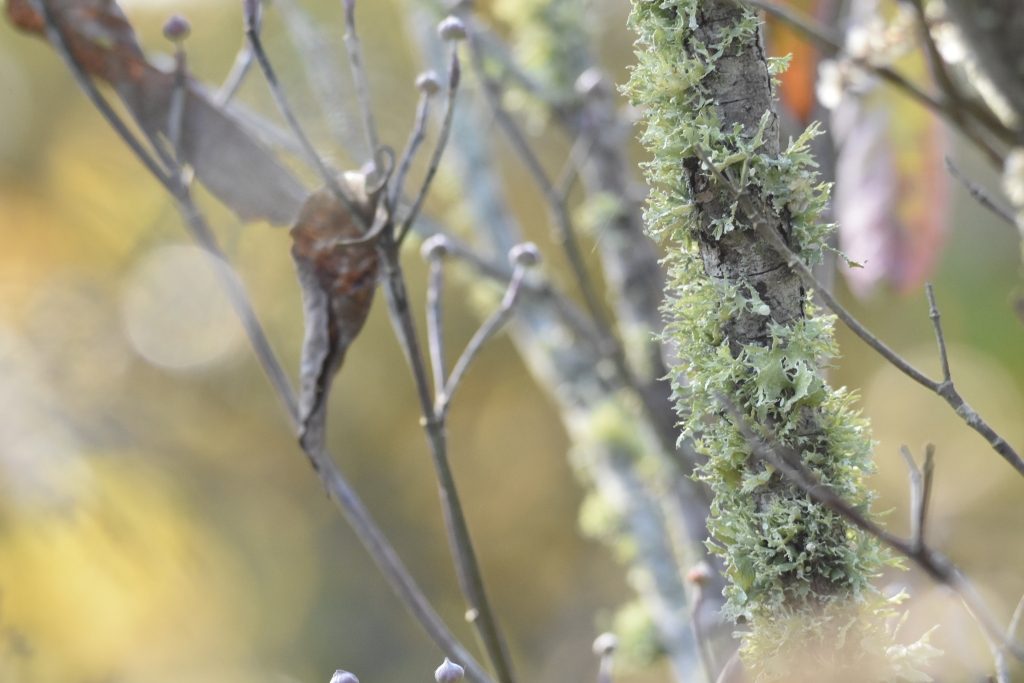
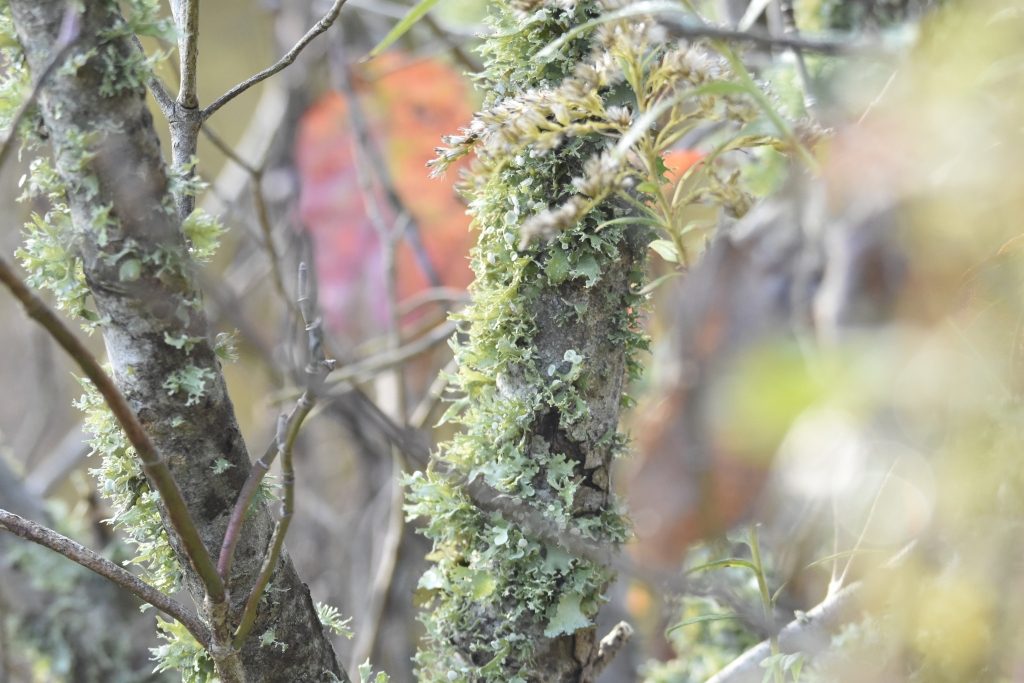
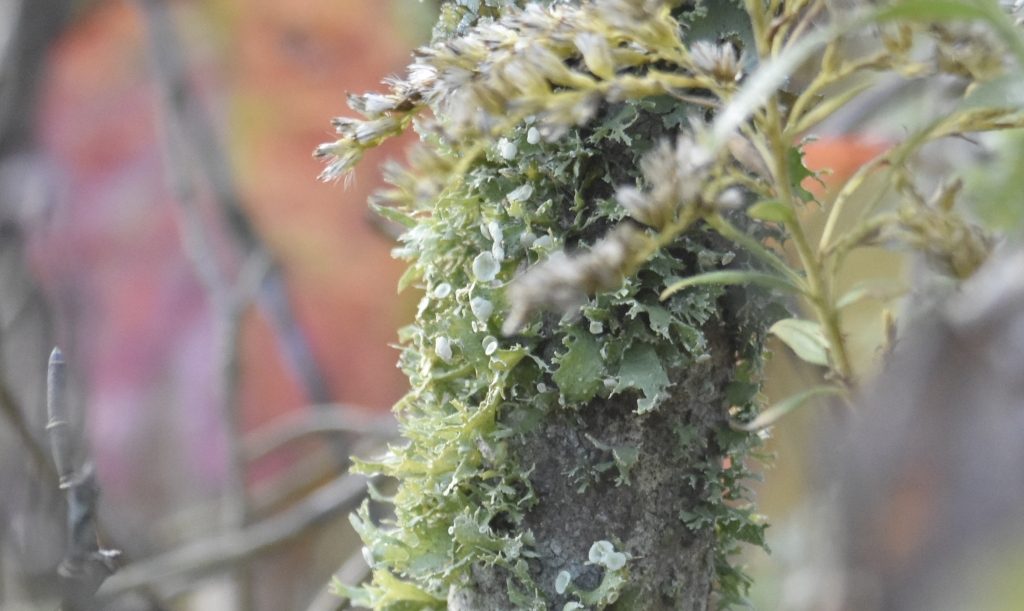
What have we here?
Lichens are two organisms that operate as one, a symbiotic partnership of a fungus with a green or blue-green algae (sometimes all three). The algae’s photosynthesis feeds the fungus. The fungus gathers and retains water and nutrients and protects the algae.
Those that grow on trees are epiphytes, totally dependent on the surrounding air and precipitation for their nutrition. As they take in air, their tissues absorb suspended elements in concentrations that mimic the air quality.
Lichens can thrive in some of the harshest habitats on earth but epiphytes can’t live in the presence of air pollution, so we were really surprised to find them on our Duck Hollow walk on 29 October 2019 when the air smelled of rotten eggs.
The smell is hydrogen sulfide from US Steel’s Clairton Coke Works, 8 miles away. On cold calm days the pollution creeps up the Mon Valley and blankets Pittsburgh’s East End, a reminder of Pittsburgh’s Smoky City days.
The pollution happens all too frequently, as shown in these screenshots from SmellPGH.org on 28 and 29 Oct 2019. (SmellPGH is a crowd-sourced app for reporting air pollution smells. Many dark red triangles mean the air smelled really bad that day. Click here for more info.)
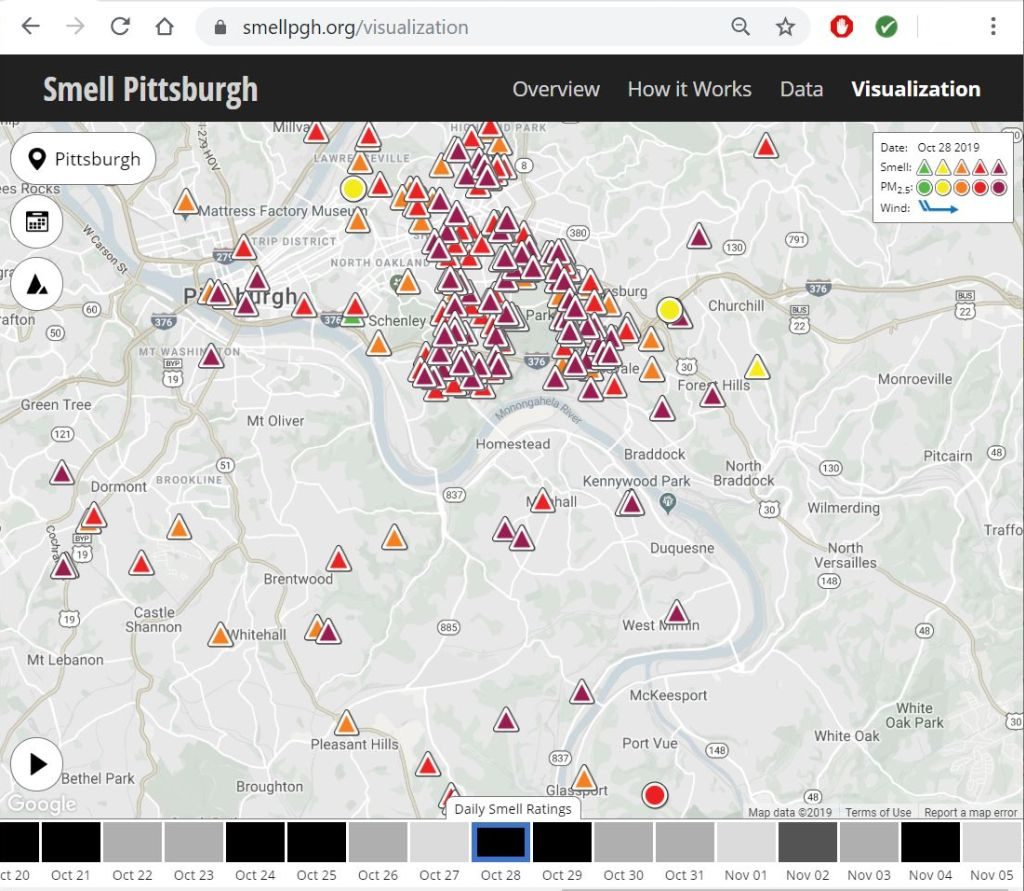
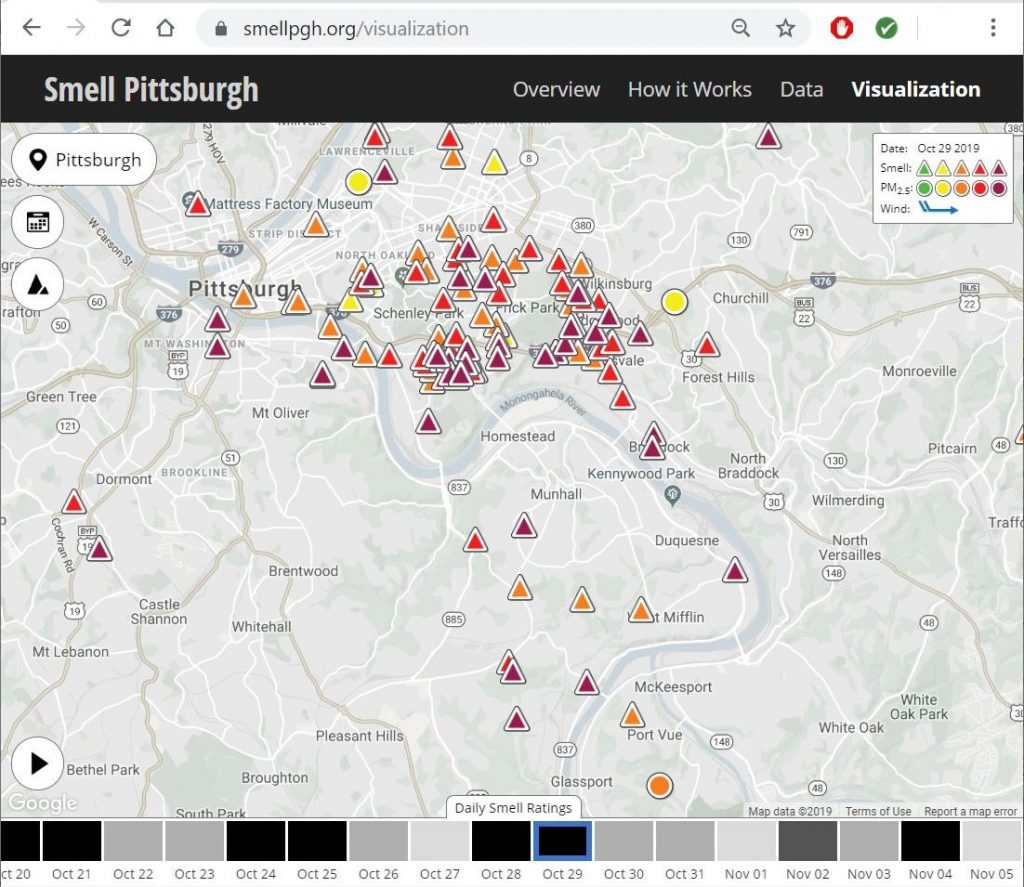
We can smell hydrogen sulfide but not two dangerous air pollutants that travel with it: sulfur dioxide and particulate. Fructose lichens — the kind that stand out from the branch like those shown above — cannot survive in the presence of sulfur dioxide.
We were amazed. What have we here?
(photos by John Bauman, screenshots from SmellPGH.org; click on the captions to see the SmellPGH website)